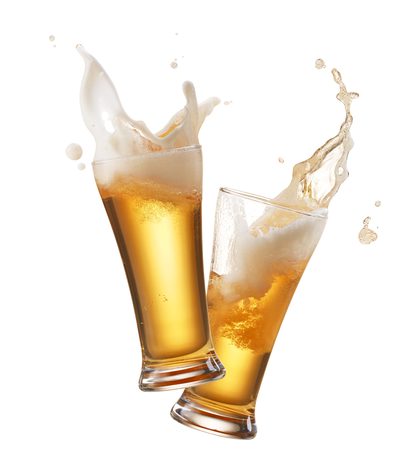Maltose, carbs, and alcohol in beer/459782753-56a5c22e3df78cf77289c7a3.jpg) You may have heard that the carbs in beer are just like any other carbohydrate. Or you may have read that the maltose in beer makes it more glycemic and it is bad on a low-carb diet. You may have also wondered about the alcohol content — is it worse than other carbs or better than other carbs? Here are some answers to common questions about drinking beer on a low-carb diet.
You may have heard that the carbs in beer are just like any other carbohydrate. Or you may have read that the maltose in beer makes it more glycemic and it is bad on a low-carb diet. You may have also wondered about the alcohol content — is it worse than other carbs or better than other carbs? Here are some answers to common questions about drinking beer on a low-carb diet.
The Alcohol
Although alcohol is often lumped in with carbohydrate, the two act differently in the body.
For one thing, when there is alcohol in the body, its calories are used first for energy, before carbohydrate or fat. It can also have some unpredictable effects on blood sugar. This is because when alcohol is present, the liver goes to work on it immediately. The liver’s job is to get rid of toxins in the body, and alcohol is like a poison in that way. While the liver is working on breaking down the alcohol, it isn’t doing its other jobs as well, including regulating the amount of glucose in the blood. So blood glucose can drop quickly. To minimize this, don’t drink on an empty stomach, and limit alcohol to two drinks per day for a man, or one drink for a woman, or at least space the drinks an hour or more apart. (Nothing will throw your diet off faster than a judgement-impairing substance.)
A drink is considered to be a 12-ounce beer, a 4-ounce glass of wine, or a 1.5-ounce jigger of distilled alcohol.)
The Carbs
There is some confusion about maltose in beer because of things written in some low-carb diet books. Although the malted barley used to make beer produces maltose, a sugar that has a glycemic index higher than glucose, the fermentation process uses up all (or almost all, depending on who you believe) the maltose in the beer while it is being brewed.
The USDA database shows that there is no maltose in beer. However, there is carbohydrate in beer that should be counted as you would count any other carb. The amount varies depending on the brand of beer. Regular beer averages about 12 grams of carbohydrate per 12 oz can or serving.
Light Beer
Light beer isn’t necessarily low-carb beer — it could be lower in alcohol. Some light beer has almost as much carbohydrate as regular beer. Most, though, is in the range of 3 to 7 grams of carbohydrate per serving. Read each label when deciding.
Ales
Ales, especially the lighter ones, generally have somewhat less carbohydrate than regular beer (5-9 grams per serving), but it’s best to check as some are higher.
Stouts
Stout is probably the worst kind of beer you can drink on a low-carb diet. Depending on the brand, it can have around 20 grams of carb per 12-oz serving. That’s a lot of carb down the hatch!

